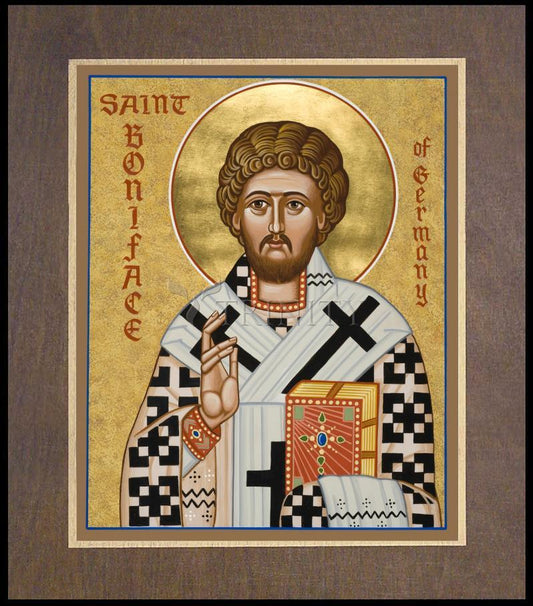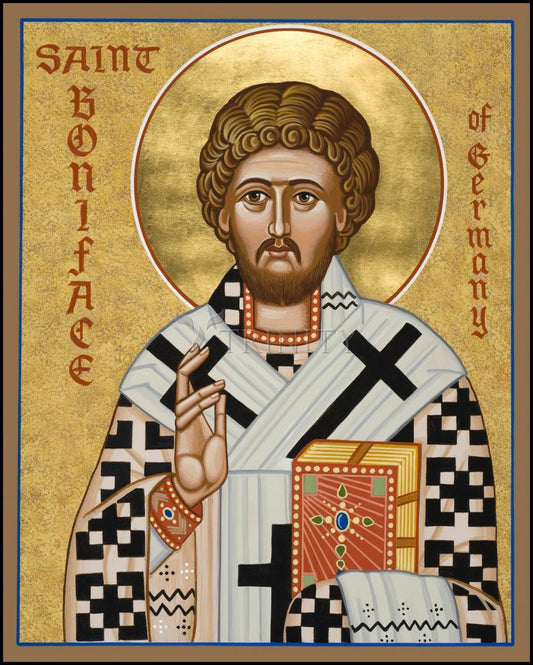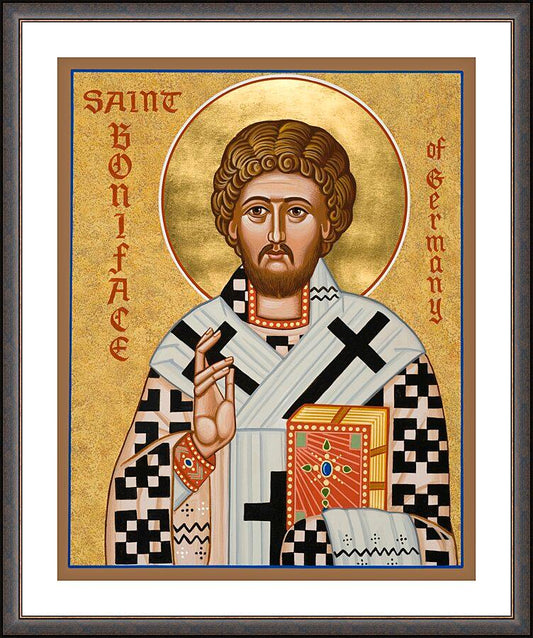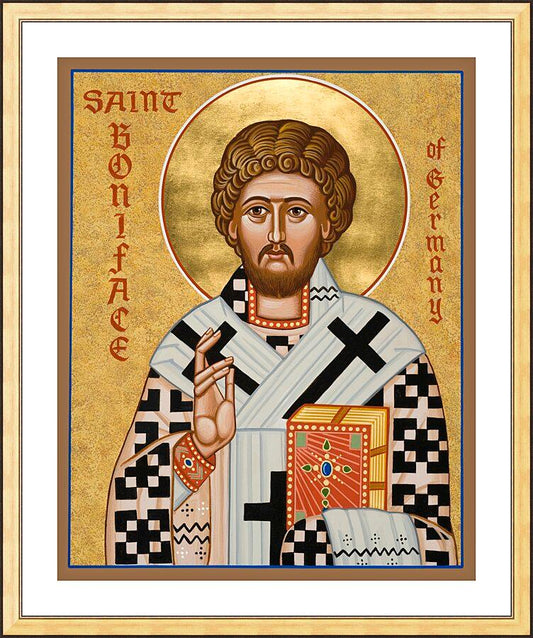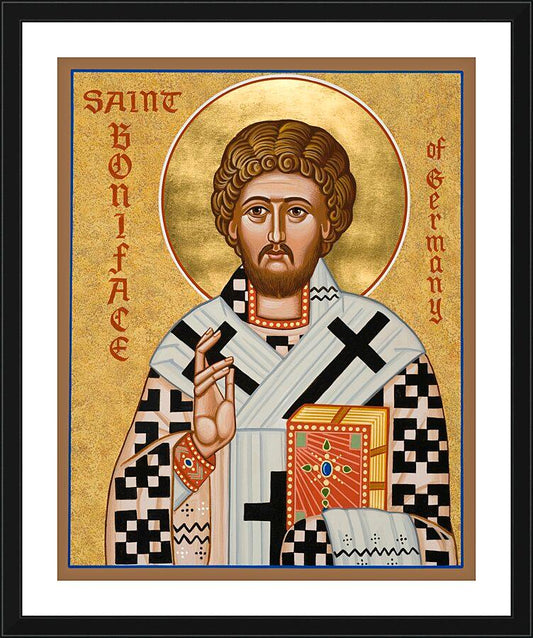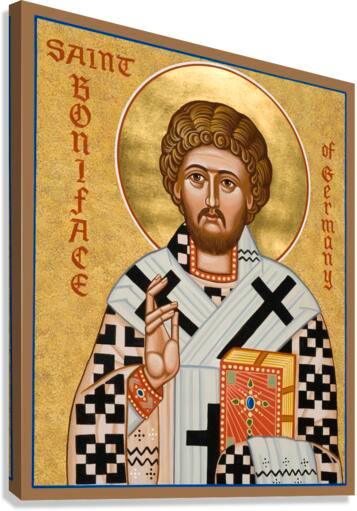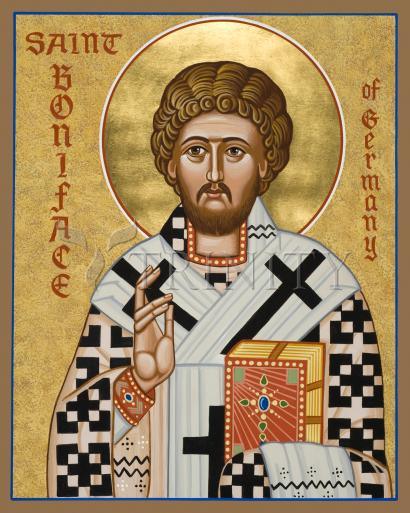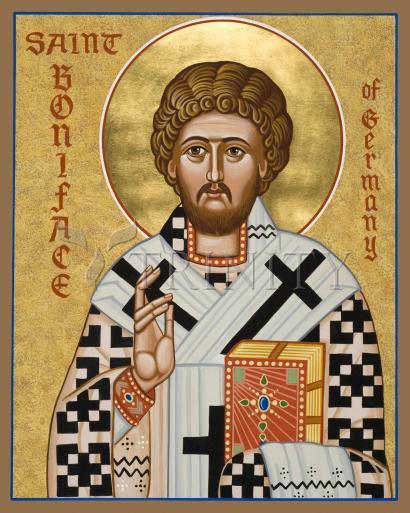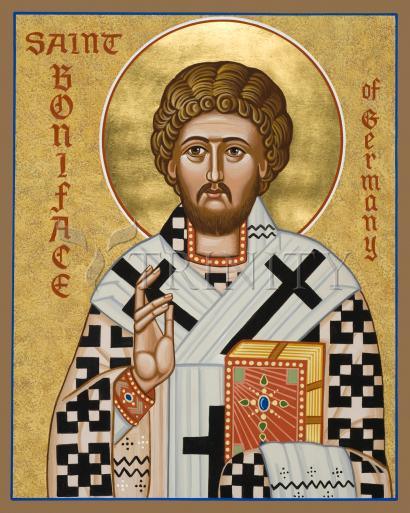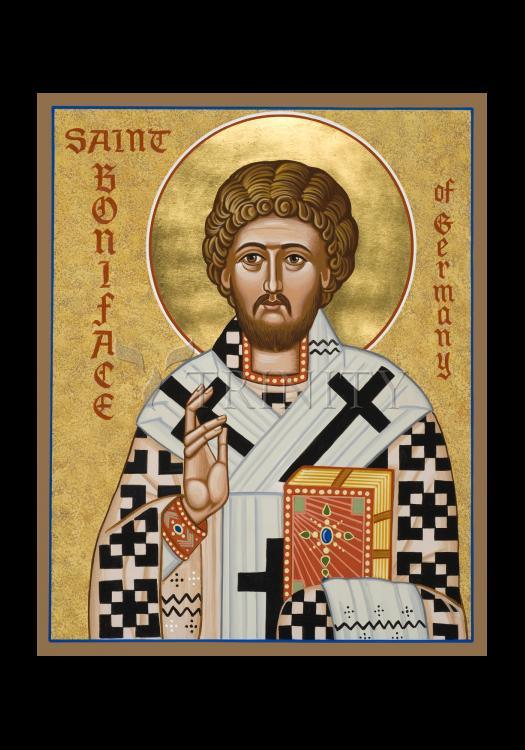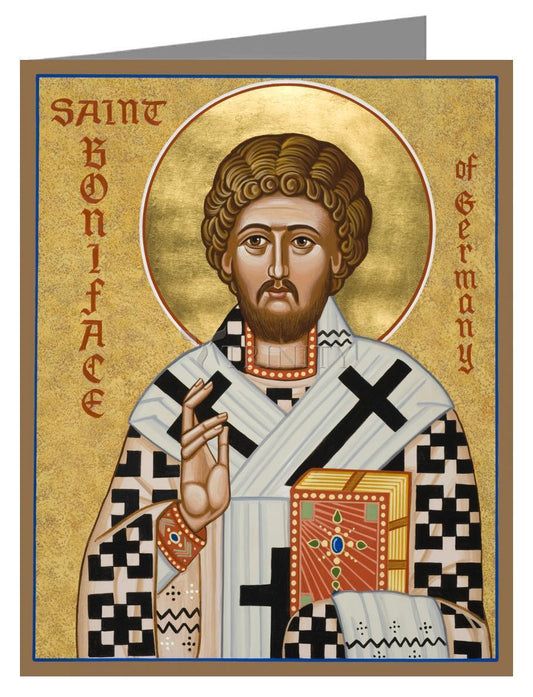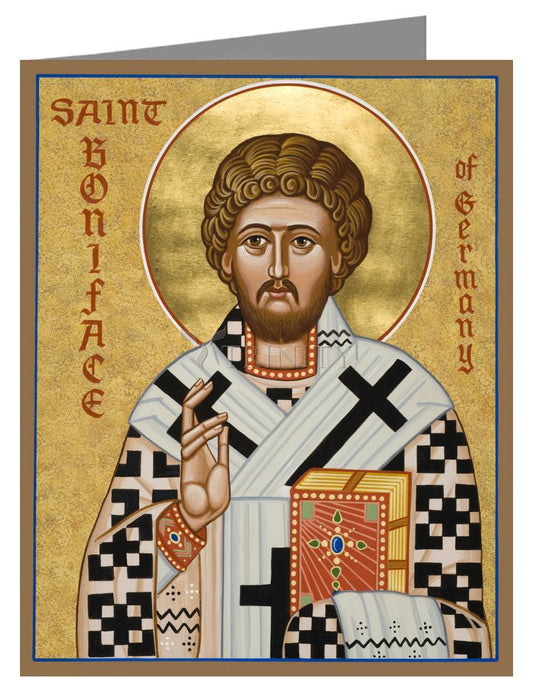In the first half of the 8th century, St. Boniface served as a missionary in Europe and helped reorganize the church in Germany and the Frankish kingdom.
St. Boniface was born circa 675 in what is today known as the county of Devon, England. He studied in English monasteries before traveling to Europe, where he converted pagan peoples in present-day Germany and the Netherlands. In his role as a bishop and archbishop, he also worked on church reforms. After returning to missionary work, Boniface was killed by pagan tribespeople in Frisia on June 5, 754, at the approximate age of 80.
St. Boniface was born as Wynfrid, also written as Wynfrith, Winfrid or Winfrith, sometime around the year 675 in Wessex (present-day Devon), England). Overcoming the initial disapproval of his Anglo-Saxon family, he was able to pursue a career in the church. Wynfrid was educated at English monasteries (first Exeter, then Nursling), and became an ordained priest at the approximate age of 30.
Instead of remaining in England, Wynfrid decided to become a missionary. In 716, he traveled to Frisia (now part of the Netherlands), following in the footsteps of other Anglo-Saxon missionaries. However, he found the local ruler unwelcoming and soon left the area.
After his return to England, Wynfrid was chosen to be the abbot of his monastery. Still wishing to evangelize, he turned down the position and proceeded to Rome in 718. There, he met with Pope Gregory II, who gave him the name Boniface.
On May 15, 719, the pope sanctioned Boniface's desire to spread the gospel. Boniface once again visited Frisia, where the political climate had changed. This allowed him to gain valuable experience as a missionary, which he then put to use in Hesse.
In 722, Boniface was made a bishop. He soon received the protection of Charles Martel, the Carolingian ruler of the Franks. His path made easier by this protection, Boniface returned to missionary work. In Geismar, he cut down an oak tree that was associated with the god Thor; conversions followed when its worshipers saw that Boniface was not immediately punished for his actions.
Boniface focused on Thuringia (part of present-day Germany) from 725 to 735. He received the pallium in 732, which made him an archbishop and gave him the ability "to consecrate bishops wherever the faithful have increased." As his proselytizing took effect, Boniface also did his best to stem any heresies he encountered. He applied the same zeal to his next task, that of organizing the church in Bavaria.
After their father's death, Boniface coordinated with Carloman and Pepin, Martel's sons, over church reforms. This resulted in Frankish clergy growing closer to Rome. Boniface, whom Pope Zachary had named the archbishop of Mainz, also may have crowned Pepin III as king in 751. Whether or not Boniface oversaw the coronation, he had laid the groundwork for papal authority to influence religious and political development in a large swath of Europe in the coming years.
Boniface next chose to return to his missionary work. He was at Dokkum in Frisia when a group of pagans killed him and his companions on June 5, 754. Boniface was approximately 80 years old at the time. His body was taken to the monastery at Fulda, which he had founded in 744. Boniface, deemed the "apostle to the Germans," is regarded as the patron saint of brewers and tailors, as well as of Germany.



